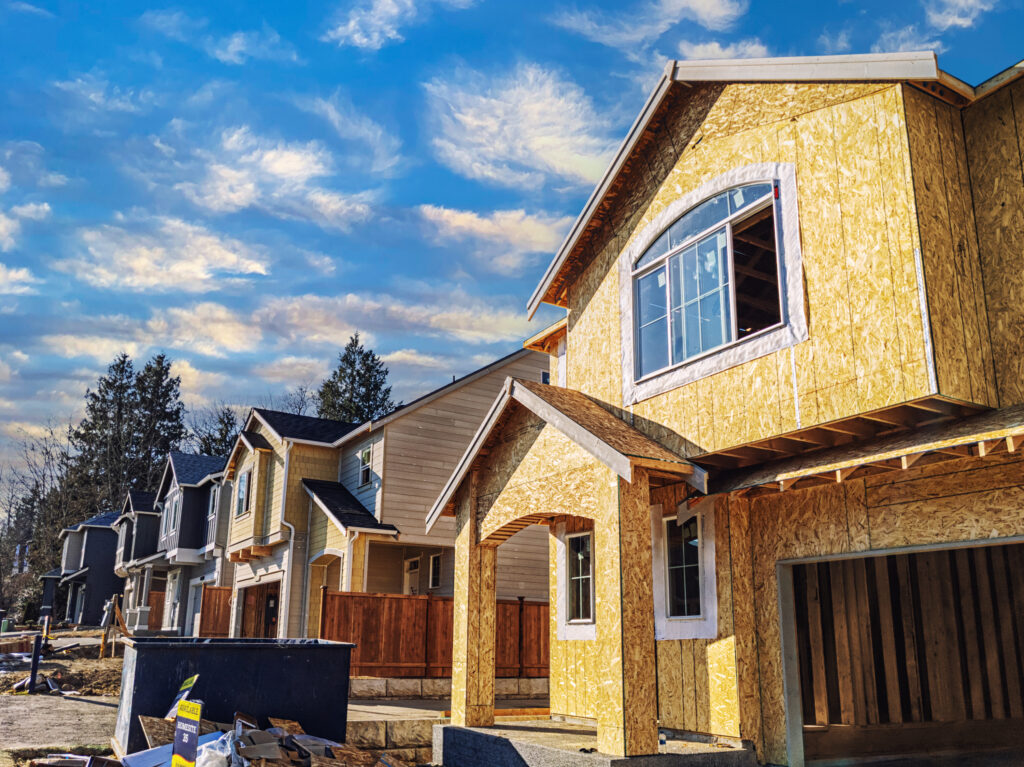
Stylish and functional windows and doors are about more than just increased curb appeal and natural light. They also play an essential role in energy efficiency and effective heating and cooling. When everything performs as intended, they preserve the building envelope by preventing moisture from entering the structure.
Door weather seals are easy to replace and aren’t always a significant expense in a renovation. Windows, however, are a different story. Because they’re mounted directly into wall openings, they’re susceptible to both air and water penetration and require a more invasive repair and replacement process.
Failing windows can be a significant source of energy loss in your home by breaking the air and water barrier. Replacing them isn’t a simple task, and doing so correctly is the only way to restore your building envelope.
Today, we’re exploring the process of replacing windows and doors. We’ll highlight signs of failure, steps to remove old windows, flashing and sealing the opening, and installation of new windows and doors.
Let’s get started!

Spring cleaning is the perfect time to assess if your windows or doors need replacing. Harsh weather is usually gone by then, and you’ll have a clear view of trouble spots. You’ll likely have an idea of which areas around your home need attention based on leaks or drafts. However, it’s a good idea to give every window and exterior door a look to make sure they’re functioning as intended.
A visual inspection is the first place to start. Begin with doors since they’re less time-consuming and easier to reach. Look for damaged weather stripping, gaps around the edges, and any operational problems or rotting frames.
Windows are often more challenging to assess, especially if your home has multiple levels or attic windows. Check each window for condensation between panes, rot around frames or sills, and difficulty opening or closing. Additionally, if you’ve noticed new drafts or air leakage, make a note of that area.
In older homes, it’s not uncommon for less efficient windows and doors to cause problems. Because over 80% of existing homes are more than 20 years old, it’s likely that you might be due for window replacements sometime soon.
Age is a significant factor in determining whether your windows need replacement. Typically, windows last between 15 and 20 years, but this varies depending on how they were constructed. High-end windows may last up to 30 years or longer, while more economical models last less.
One of the most significant issues with older windows is energy loss. When the temperature outdoors is at extremes, single-pane windows offer little insulation, and air either heats or cools as it passes by. Double-pane windows offer more protection, but a blown seal can reduce their effectiveness.
Poorly sealed doors and windows also allow bulk water to enter the home, causing water damage to surrounding materials.
If you’ve discovered windows that need replacing, this is a good opportunity to improve your home’s energy efficiency. When considering your options, you’ll want to make note of the U-factor and R-value of the potential replacement. The EPA Energy Star Program considers these measures when evaluating windows for rebate and incentive programs.
The National Fenestration Rating Council rates windows based on the following criteria. Manufacturers affix labels like the one below to help consumers make informed choices.
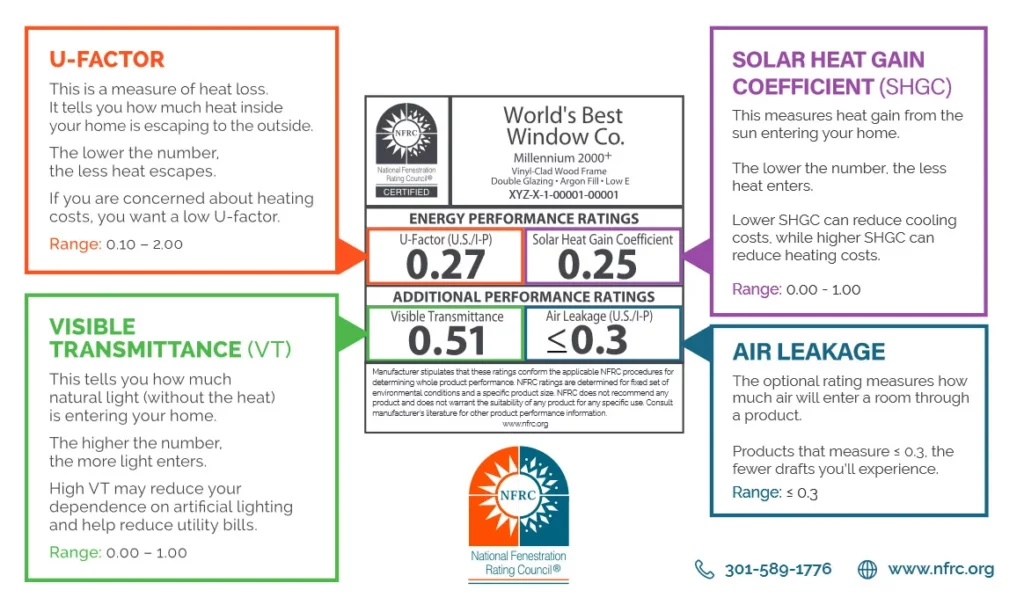
The U-factor of a window measures how easily heat transfers between the interior and exterior of the assembly. It includes the entire window, including the glazing, spacer (for double or triple pane), and framing. Low-efficiency windows allow more heat to pass through, which can increase the need for adjusting your thermostat.
R-value is the measurement of how much insulation a product provides to a structure. In the building envelope, we consider everything from the stud wall out when calculating R-value. With the move toward a continuous insulation layer, the role windows play is even more critical than before. A single pane window could have an R-value of around 1, which indicates poor insulation. High R-value windows can reach as high as 5, but are more expensive than alternatives.
This factor measures the amount of air that can pass through a window assembly. To be Energy Star Certified, windows must have an air leakage rate of .3 cfm/ft2 or less.
The amount of light a window allows to pass through is measured by visible transmittance (VT). Natural light adds to a home’s ambiance, but it can also generate heat, driving up cooling costs. Tailoring VT and the solar heat gain coefficient (SHGC) can help optimize window performance for your region. Cooler regions prefer a higher SHGC, while warmer areas are better suited to a lower one.
Glazing refers to the number of panes of glass in the window assembly. Single pane is the least efficient and is often found in older homes. Double-pane windows increase efficiency by incorporating a spacer and an air gap. Triple-pane windows have the highest efficiency level, but also the highest price tag.
Between panes, many manufacturers include gas fills, such as argon and krypton. Pumped into the air gap, these inert gases enhance insulation. Argon is more affordable and commonly used in double-pane windows, while krypton is more expensive and typically found in triple-pane windows.
Finally, we’ll discuss the different frame material options and how they affect window performance.
Ultimately, selecting the right replacement windows is a crucial step in improving energy efficiency. That said, installation can be the deciding factor in how your windows perform over time.
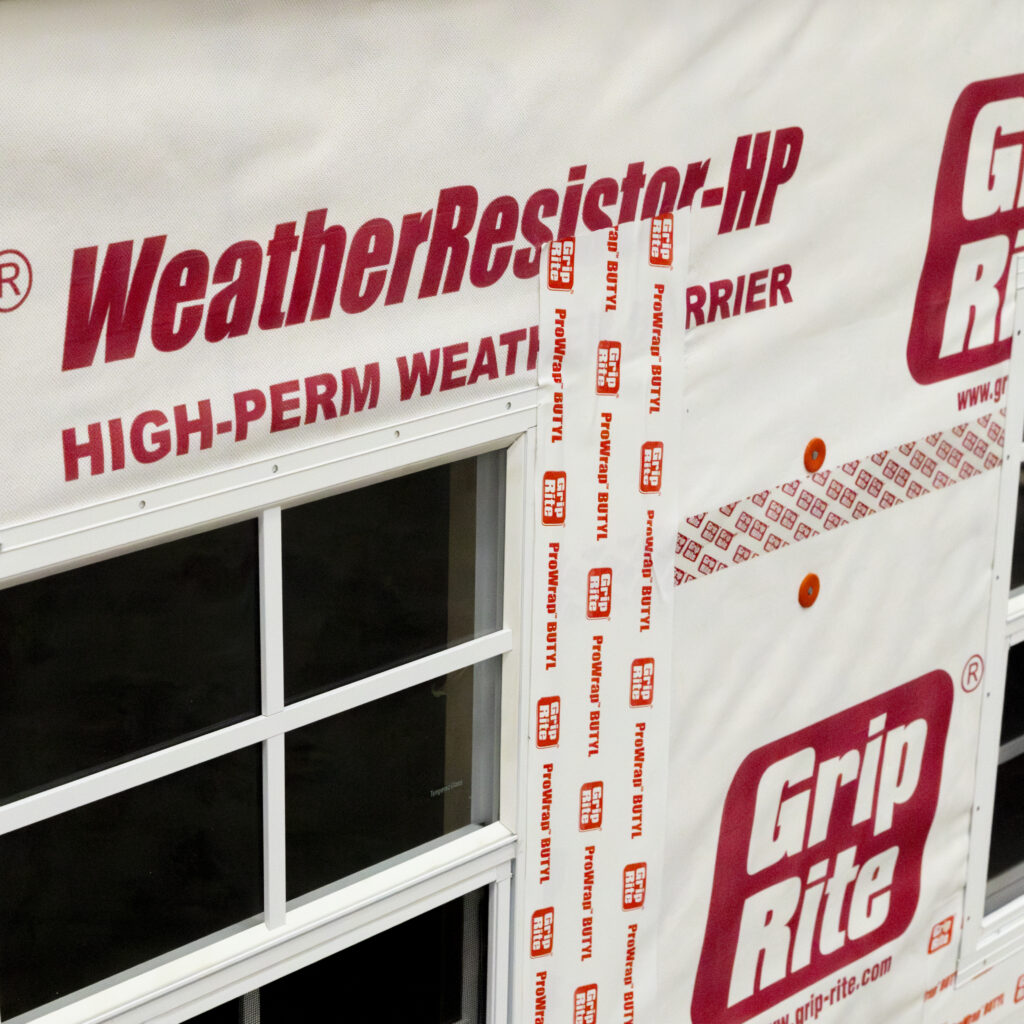
Installing your new windows is best done by a professional contractor to ensure proper alignment and sealing. Educated homeowners can flag any issues early for contractors, so understanding the process is crucial. To ensure that the installation maintains the air and water control layer, the following steps will be taken by a contractor.
Before installation, the contractors will remove any necessary siding or brick to access the existing windows. During this process, they’ll asses the window opening for water damage or structural issues. Removing damaged structural elements and treating water damage ensures a solid connection during installation.
Windows sit on a sill plate that should be angled to direct any water away from the structure. Flashing tape protects the sill plate and prevents bulk water intrusion around the installed window. Before installation, the sill plate is typically coated with flashing tape to protect the substrate.
Using a flashing tape like Grip-Rite® ProWrap™ Flex, cover each surface starting with the sill plate. From there, cover the side jambs and then the head. The idea here is to prevent water from finding any gaps in your coverage.
Once the opening is flashed correctly, the window assembly can be dropped in. Follow the manufacturer’s recommendations to preserve warranties and the best performance.
After the window is installed, flashing tape is again applied to seal around fasteners and preserve the air and water barrier. Begin with the bottom of the assembly and then flash around the sides before moving to the top.
The role flashing tape plays in a leak-free installation is crucial to window performance. Grip-Rite ProWrap flashing tapes combine superior quality and performance with easy installation.
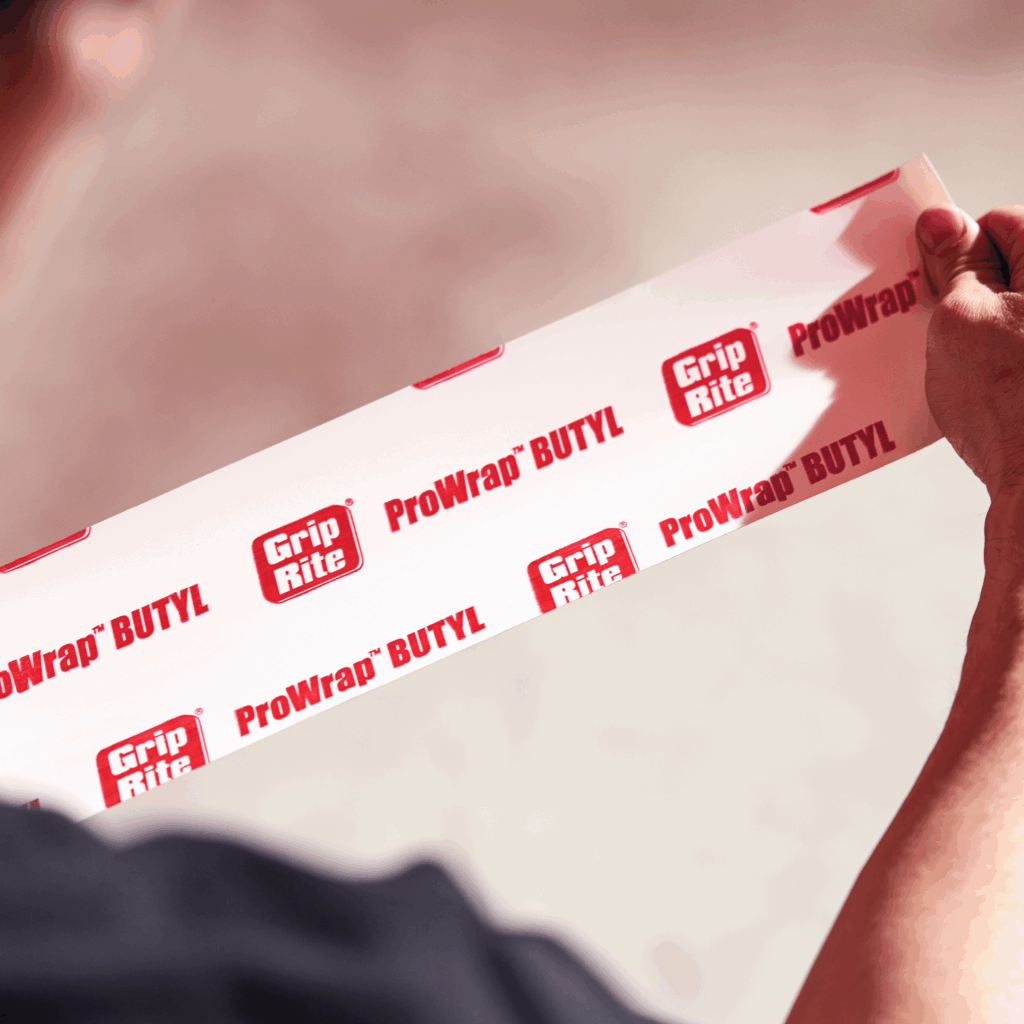
ProWrap™ BUTYL Window and Door Protector is a self-adhesive tape intended to preserve the air and water barrier around door and window assemblies. It prevents bulk water intrusion and provides continuous protection against the elements. UV-stable and conformable, the sealant remains unaffected by temperatures as low as 20°F.
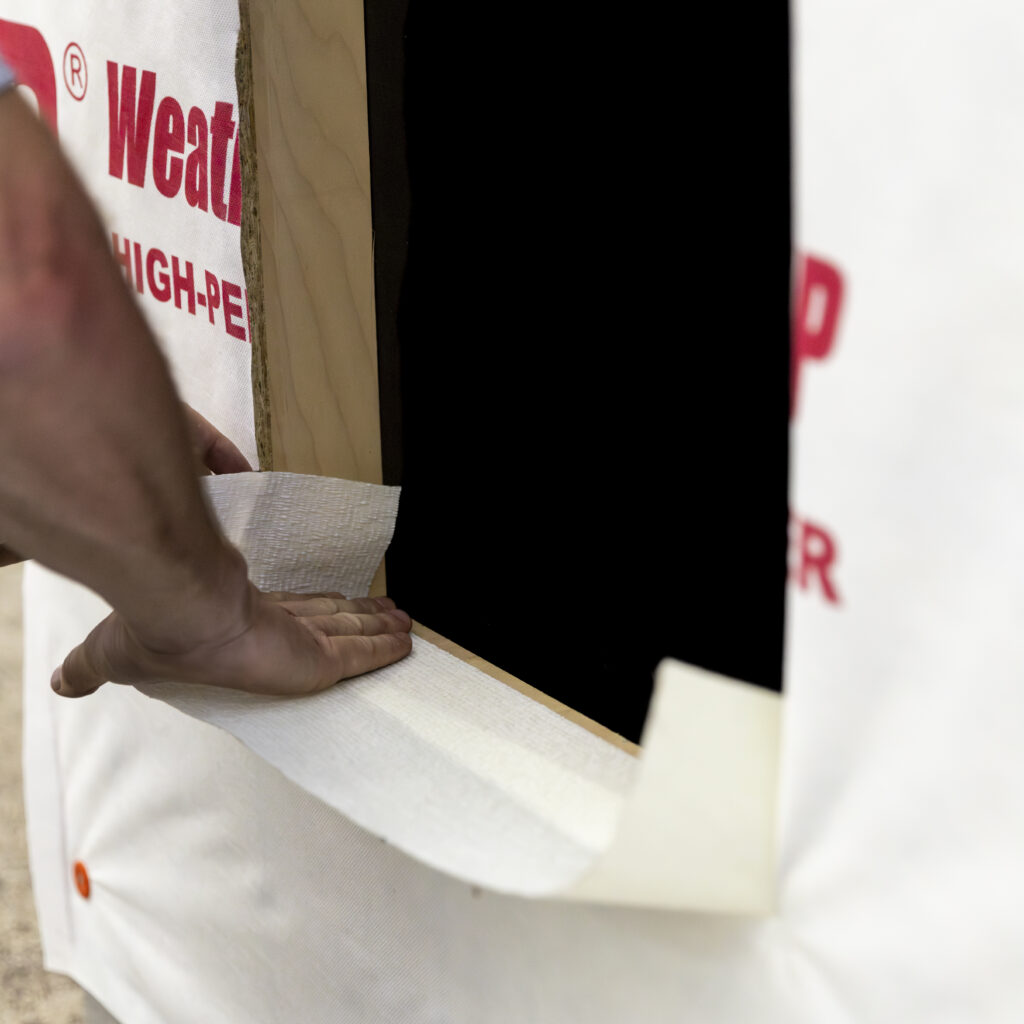
ProWrap FLEX Window and Door Protector is an extensible self-adhesive tape intended to preserve the air and water barrier for curved surfaces and hard-to-seal corners. It prevents bulk water intrusion and provides continuous protection against the elements. UV-stable and conformable, the sealant remains unaffected by temperatures as low as 20°F.
Grip-Rite also offers an industry-leading limited lifetime warranty when eligible house wrap and flashing products are used together.
Learn more about the Grip-Rite PROtection System Guarantee!
Replacing outdated, inefficient windows is one of the most effective ways to improve energy efficiency in older homes. When integrated into the building envelope, they reduce thermal loss and preserve the air and water barrier essential to a healthy indoor environment.
Preserving the air and water barrier in your home with Grip-Rite ProWrap flashing tapes is simple. Our award-winning, self-adhesive, conformable tapes deliver professional-quality results every time.
Find out Where to Buy Grip-Rite near you!